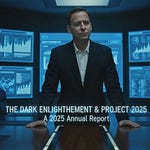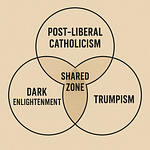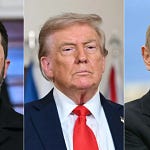The American media ecosystem between 2024 and 2025 stands at a critical crossroads, shaped by political interference, corporate consolidation, and declining public trust. The cancellation of The Late Show with Stephen Colbert by CBS after the comedian criticized its parent company’s $16 million settlement with Donald Trump became a lightning rod for wider concerns about political pressure on media. While CBS claimed financial motivations, the proximity to Colbert's critique raised red flags. Observers noted this as a chilling example of how corporate media may suppress dissenting voices to protect business interests – in this case, smoothing a merger deal with Skydance Media.
This report explores the intersection of politics, censorship, consolidation, and free expression. Key developments include Trump’s legal and rhetorical attacks on media, regulatory threats, defunding of public broadcasters, and the erosion of protections for independent journalism. While some outlets push back, many exhibit self-censorship or compliance under pressure. Independent media and advocacy groups continue to serve as vital bulwarks for the First Amendment, but they face uphill battles amid rising polarization and economic precarity.
The implications are profound. Trust in media has collapsed, with the U.S. falling to its lowest-ever ranking on the global Press Freedom Index. The public, splintered by ideology, increasingly questions the integrity of mainstream narratives. Unless structural reforms and cultural shifts are pursued – such as anti-SLAPP protections, transparency mandates, and support for non-corporate journalism – the American press risks becoming a compliant echo of power, rather than a check on it.
This analysis, grounded in legal, journalistic, and civic data, warns of a soft-authoritarian trajectory emerging in the U.S. media landscape – one where freedom of the press still exists on paper, but not in practice.
Contents:
The Colbert Case: A Cautionary Tale
Trump’s Full-Court Press Against Media
Mainstream Networks: Appeasement vs. Resistance
Consolidation and Conflict of Interest
Independent Journalism: Watchdogs of the Watchdogs
Public Sentiment and Press Freedom Rankings
Historical Parallels and New Threats
Legal, Cultural, and Civic Solutions
Conclusion: Defending the Democratic Commons
The Press Entangled: A Modern Threat the Founders Never Imagined
The Founders likely did not envision a scenario where the biggest threat to a free press comes not from formal laws but from the press's own entanglement with power. Yet here we are.
In the 18th century, when the First Amendment was drafted, the threat to freedom of expression was expected to come from government censorship — royal decrees, federal sedition acts, or partisan suppression. The Framers saw the press as a crucial watchdog against tyranny, not an arm of it. They built a legal bulwark against overt repression. But what they could not have foreseen was a future where market consolidation, regulatory capture, and the intertwining of media conglomerates with political and corporate interests would subtly but systematically undermine that very freedom.
Today, some of the most consequential threats to journalistic independence don’t come from state censors but from media executives in boardrooms negotiating billion-dollar deals. News divisions that once proudly held power to account are now subsidiaries of entertainment giants whose bottom line often hinges on not upsetting the White House, regulatory agencies, or the very industries they cover.
Consider the chilling irony: a comedy host like Stephen Colbert, widely celebrated for incisive political commentary, sees his show canceled just days after ridiculing his own network's decision to settle with Trump. CBS called it a business move. But was it also an editorial decision made in the shadow of a merger? If so, the press has not been silenced by a law, but by a spreadsheet.
The deeper danger is normalization. When corporate owners fear political retaliation and preemptively neuter critical coverage, the press shifts from watchdog to lapdog. The power to shape public discourse slips from the hands of journalists and into those of financiers and dealmakers. And because this erosion comes dressed in the language of business strategy rather than authoritarian decree, it is harder to detect, harder to resist, and harder to rally against.
Meanwhile, politicians — emboldened by these quiet capitulations — escalate their pressure. Lawsuits. Threats. Defunding. A media ecosystem already weakened by layoffs and consolidation becomes even more vulnerable to coercion. The spiral is self-reinforcing.
The Founders gave us the First Amendment to protect against tyranny. But no clause can save the press if its own guardians surrender the fight. To protect democracy, journalism must remain adversarial, independent, and brave — not just legally free, but structurally protected and culturally supported. If not, the freedoms enshrined in 1789 may be honored more in theory than in practice.











